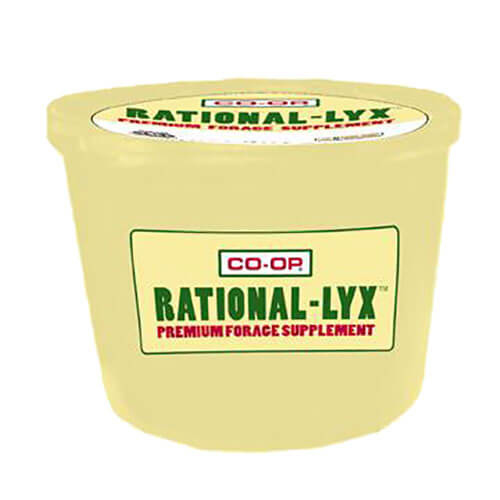Cattle Supplement Tubs
Jan 13, 2020

In recent years lick tubs have become an increasingly popular method for beef producers to supplement their herds. The convenience of a concentrated, self-fed source of nutrition is very attractive, but the wide variety of products and prices can be confusing. Basically, there are three main types of tubs: pressed, poured, and low moisture.
Pressed tubs are produced by compressing a mixture of common feed ingredients into a tub form in much the same way pellets or cubes are made. Daily consumption by cattle is determined by the hardness of the product and tends to be quite variable. Daily intake will also likely be the highest of the three, and the price per tub usually the lowest.
Poured tubs, sometimes referred to as chemical tubs, are formed when molasses and other ingredients are mixed with a hardener to produce a product that sets up in the tub over time. Intake will typically be lower than pressed tubs and better controlled, making them a better value to the producer.
Finally, low moisture or “cooked” tubs, referring to the manufacturing process, are produced by heating the ingredient mixture to drive off moisture. This results in a hard, crystallized blend of molasses solids, fat, protein, vitamins, and minerals. At only 2-4% moisture, the final product has the highest concentration of nutrients of the three and as a result, usually the highest price per tub. So why would anyone choose this option?
Since intake is the lowest, many cattlemen consider them to be the best value. Less time and labor will be spent putting out tubs and their weatherproof nature allows you to feed when you want without waste. Enhanced palatability and 24-hour access allow for very predictable consumption.
Co-op has partnered with the newest low moisture plant in the country, which happens to be in Tennessee, to bring you our Rational-Lyx line of low moisture cattle supplement tubs. State of the art innovation and technology found in our continuous flow process virtually eliminate batch to batch variation ensuring consistent, predictable intake. Lack of moisture, no chemical hardeners, and no intake inhibitors mean more room for nutrition. Controlled consumption means you’ll spend less total dollars over the feeding season.
So this feeding season consider the advantages of low moisture cattle tubs. And when you do, think about the advantages of Co-op Rational-Lyx low moisture tubs – made right here in Tennesse for cattle consuming Tennessee forages. See the folks at your local Co-op for more information.
Pressed tubs are produced by compressing a mixture of common feed ingredients into a tub form in much the same way pellets or cubes are made. Daily consumption by cattle is determined by the hardness of the product and tends to be quite variable. Daily intake will also likely be the highest of the three, and the price per tub usually the lowest.
Poured tubs, sometimes referred to as chemical tubs, are formed when molasses and other ingredients are mixed with a hardener to produce a product that sets up in the tub over time. Intake will typically be lower than pressed tubs and better controlled, making them a better value to the producer.
Finally, low moisture or “cooked” tubs, referring to the manufacturing process, are produced by heating the ingredient mixture to drive off moisture. This results in a hard, crystallized blend of molasses solids, fat, protein, vitamins, and minerals. At only 2-4% moisture, the final product has the highest concentration of nutrients of the three and as a result, usually the highest price per tub. So why would anyone choose this option?
Since intake is the lowest, many cattlemen consider them to be the best value. Less time and labor will be spent putting out tubs and their weatherproof nature allows you to feed when you want without waste. Enhanced palatability and 24-hour access allow for very predictable consumption.
Co-op has partnered with the newest low moisture plant in the country, which happens to be in Tennessee, to bring you our Rational-Lyx line of low moisture cattle supplement tubs. State of the art innovation and technology found in our continuous flow process virtually eliminate batch to batch variation ensuring consistent, predictable intake. Lack of moisture, no chemical hardeners, and no intake inhibitors mean more room for nutrition. Controlled consumption means you’ll spend less total dollars over the feeding season.
So this feeding season consider the advantages of low moisture cattle tubs. And when you do, think about the advantages of Co-op Rational-Lyx low moisture tubs – made right here in Tennesse for cattle consuming Tennessee forages. See the folks at your local Co-op for more information.